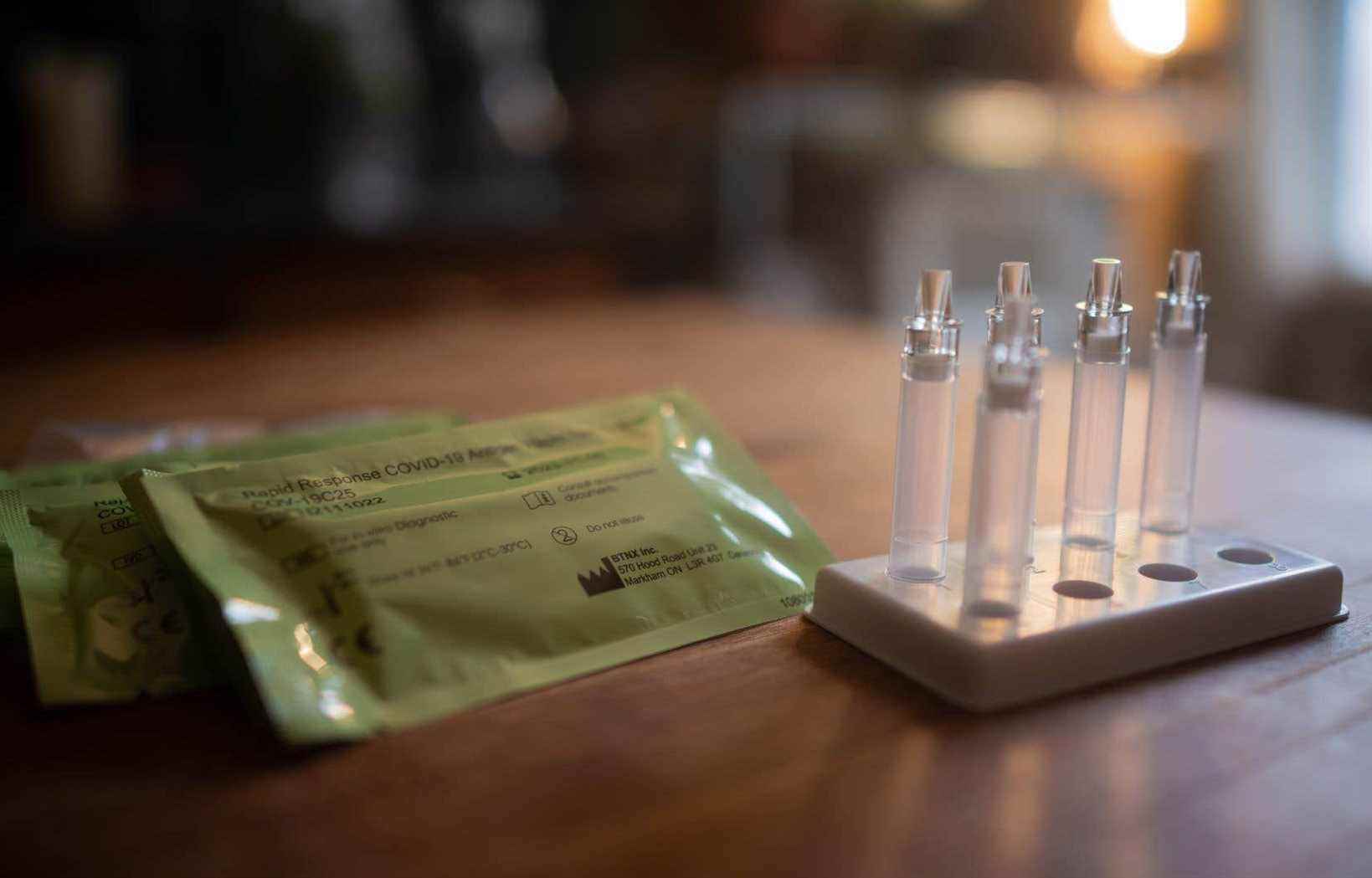Several people infected with the Omicron BA.2 subvariant felt that rapid antigen tests were not very effective in detecting their infection. Mutations in this new variant are not to blame, experts say, and the rapid test is just as effective. But the peak shedding of this variant occurs a few days later than for the previous variants, which would explain why infected people sometimes test negative several times before seeing a positive result.
Judith Fafard, director of the Laboratoire de santé publique du Québec (LSPQ), first recalls that the sensitivity of rapid antigenic tests, that is to say their ability to detect the presence of virus in a sample, is generally lower than that of PCR (polymerase chain reaction) tests.
“A rapid antigen test will detect between 75 and 90% of cases detected by PCR when people have symptoms, and between 30 and 50% of cases when people have no symptoms. This sensitivity is influenced by the amount of virus present in the respiratory tract, which changes from day to day,” she explains.
This lack of test sensitivity may partly explain the “false negative” results that some people infected with Omicron variants may obtain.
The ability of the rapid tests to detect the virus when it is present is the same whether it is Omicron BA.1, BA.2 or any other variant. “This test is unaffected by Omicron mutations for both BA.1 and BA.2,” says Dr.D Fafard. On the other hand, the Omicron variants exhibit different kinetics from that of the preceding variants. Peak viral shedding of Omicron occurs later than for the other variants.
Viral kinetic studies that have analyzed peak SARS-CoV-2 shedding have shown that peak virus shedding generally occurs on the day symptoms occur or within two days. “This is why diagnostic tests generally gave better results the day the symptoms appeared,” said Dr.D Fafard.
4 to 5 days after symptoms
However, for Omicron, this peak of viral excretion seems to be a little off: it would arrive around four to five days after the onset of symptoms. In a Japanese study, the amount of viral RNA peaked between three and six days after the onset of symptoms, then gradually decreased until it fell ten days after the onset of symptoms. The authors of another American study estimated that the peak of shedding occurred 4.52 days after the onset of symptoms.
“This means that we can test negative when symptoms appear, but these tests will become positive within three to four days. What is certain is that once we have symptoms, we are contagious even if our antigen test is negative, ”points out the DD Fafard.
It is not known, however, whether, before symptoms, people are contagious earlier with Omicron than with earlier variants. However, studies have shown that the incubation period, which is the period between when you are exposed to the virus and when you start shedding viruses, is shorter for Omicron (an average of three days). than for the previous variants (duration of about five days).
While the BA.2 subvariant is currently spreading like wildfire here and elsewhere in the world, the negative predictive value of the rapid antigen test is another factor that may cause us to consider a negative result with caution. The negative predictive value, which is the level of confidence one can have in a negative test, “depends on the prevalence of infections in the community”, explains the Dr Donald Vinh, microbiologist-infectiologist at the MUHC.
More cases, more false negatives
For a test that does not have excellent sensitivity, such as the rapid antigen test, this negative predictive value decreases when the virus begins to circulate abundantly. “When there are a lot of cases in the community, then it is more likely that you will test positive even if the test gives a negative result. If in the population there are 100 infected people and the test generally gives a false negative in 20% of cases, this means that 20 infected people will obtain a negative result on their test. If there are 1000 infected people in the population, this means that 200 infected people will not be detected by this test, the predictive value of a negative result is then less good. This is why, at the moment, when we are at the beginning of the wave and the number of cases is growing, we are seeing that people are more frequently reporting that they are obtaining false negative results, ”indicates the DD Fafard.
“Modeling and a little generalization told us that when the rapid antigenic test does not detect an infection, it is probably that people are not contagious because their viral load is too low. But this time, we have empirical data which show that these people transmit all the same ”, warns the DD Fafard.
Certainly, when you have symptoms comparable to those of COVID-19, even if the rapid tests come back negative, since the sensitivity of these tests is not perfect, it is not a good idea. to visit vulnerable people or go to rallies, say the DD Fafard and the Dr Vinh.
